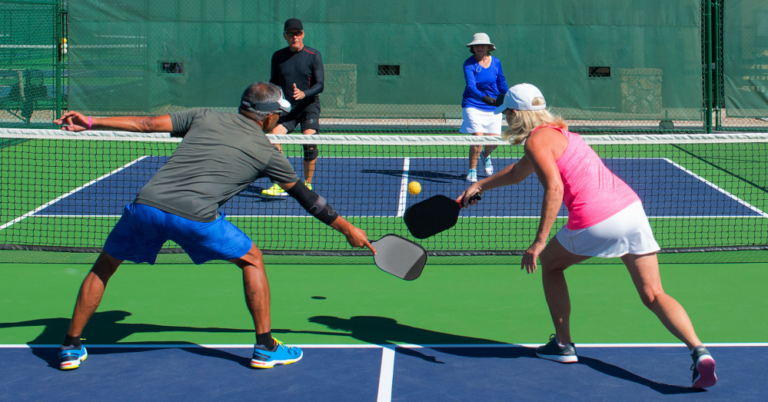As pickleball continues to gain popularity, many communities are considering retrofitting their existing tennis courts to make them playable for pickleball. This raises the question: will pickleball replace tennis on your HOA’s courts? While there is no one-size-fits-all answer, there are several factors that HOA Boards should consider when making this decision.
First, it’s important to understand the growing popularity of pickleball. According to a report by the Sports & Fitness Industry Association (SFIA), pickleball participation grew by 21.3% in 2020, making it one of the fastest-growing sports in the United States. The USA Pickleball Association also conducted a survey that found that pickleball is popular across all age groups, with the majority of players being over the age of 55.
Given the growth of pickleball and its popularity amongst older adults, it’s no surprise that many communities, especially active adult communities, have dedicated pickleball courts. In fact, many of these communities have made the decision to convert existing tennis courts into pickleball courts to meet the demand of their residents.
But what should HOA Boards consider when retrofitting their existing tennis courts for pickleball play? One important factor is the condition of the existing tennis courts. If the tennis courts are in poor condition or in need of repair, it may be more cost-effective to replace them with new pickleball courts rather than retrofitting them.
Another important factor to consider is the estimated cost of retrofitting the existing tennis courts for pickleball play. While the cost can vary depending on the condition of the existing courts and the type of modifications required, it can be significant. The cost of converting a single tennis court to a pickleball court can range from $3,000 to $10,000 or more, depending on the scope of the modifications required. Working with qualified contractors for an accurate cost estimate can help HOA Boards make informed decisions.
It’s also important to consider the needs and preferences of the community members. If the majority of the community members are tennis players or prefer tennis over pickleball, it may not make sense to retrofit the existing courts. On the other hand, if the community has a growing interest in pickleball, retrofitting the existing courts can help meet this demand and provide a new recreational opportunity for community members. Consider a community survey to determine such interest, the results may surprise you.
Finally, HOA Boards should consider the impact on property values. While it’s difficult to predict the exact impact, it’s worth noting that having a variety of recreational amenities can make a community more attractive to potential homebuyers and increase property values.
Retrofitting existing tennis courts for pickleball play is a decision that HOA Boards should consider carefully. By considering the condition of the existing courts, the estimated cost, the needs and preferences of the community members, and the potential impact on property values, the Board can make an informed decision about whether to retrofit their existing tennis courts for pickleball play.









